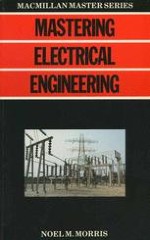1985 | OriginalPaper | Buchkapitel
Single-Phase a.c. Calculations
verfasst von : Noel M. Morris
Erschienen in: Mastering Electrical Engineering
Verlag: Macmillan Education UK
Enthalten in: Professional Book Archive
Aktivieren Sie unsere intelligente Suche, um passende Fachinhalte oder Patente zu finden.
Wählen Sie Textabschnitte aus um mit Künstlicher Intelligenz passenden Patente zu finden. powered by
Markieren Sie Textabschnitte, um KI-gestützt weitere passende Inhalte zu finden. powered by
A single-phase circuit containing a resistor, an inductor and a capacitor is shown in Figure 12.1. You will recall that the phase relationship between the voltage and the current in a circuit element depends on the nature of the element, in other words, is it an R or an L or a C? This means that in an a.c. circuit you cannot simply add the numerical values of V R , V L and V C together to get the value of the supply voltage V S ; the reason for this is that the voltage phasors representing V R , V L and V C ‘point’ in different directions relative to the current on the phasor diagram. To account for the differing ‘directions’ of the phasors, you have to calculate V S as the phasor sum of the three component voltages in Figure 12.1. That is <m:math display='block'> <m:semantics> <m:mrow> <m:math display='block'> <m:mrow> <m:mtext>supply voltage, </m:mtext><m:msub> <m:mi>V</m:mi> <m:mi>S</m:mi> </m:msub> <m:mtext> = </m:mtext><m:mi>p</m:mi><m:mi>h</m:mi><m:mi>a</m:mi><m:mi>s</m:mi><m:mi>o</m:mi><m:mi>r</m:mi><m:mi> </m:mi><m:mi>s</m:mi><m:mi>u</m:mi><m:mi>m</m:mi><m:mtext> of </m:mtext><m:msub> <m:mi>V</m:mi> <m:mi>R</m:mi> </m:msub> <m:mtext> , </m:mtext><m:msub> <m:mi>V</m:mi> <m:mi>L</m:mi> </m:msub> <m:mtext> and </m:mtext><m:msub> <m:mi>V</m:mi> <m:mi>C</m:mi> </m:msub> </m:mrow> </m:math> </m:semantics> </m:math> $$ {\text{supply voltage, }}{V_S}{\text{ = }}phasor sum{\text{ of }}{V_R}{\text{ , }}{V_L}{\text{ and }}{V_C} $$ To illustrate how this is applied to the circuit in Figure 12.1, consider the case where the current, I, is 1.5 A, and the three voltages are <m:math display='block'> <m:semantics> <m:mrow> <m:math display='block'> <m:mrow> <m:msub> <m:mi>V</m:mi> <m:mi>R</m:mi> </m:msub> <m:mtext> =150 V, </m:mtext><m:msub> <m:mi>V</m:mi> <m:mi>L</m:mi> </m:msub> <m:mtext> = 200 V, </m:mtext><m:msub> <m:mi>V</m:mi> <m:mi>C</m:mi> </m:msub> <m:mtext> = 100 V</m:mtext></m:mrow> </m:math> </m:semantics> </m:math> $$ {V_R}{\text{ = 150 V, }}{V_L}{\text{ = 200 V, }}{V_C}{\text{ = 100 V}} $$ We shall consider in turn the phasor diagram for each element, after which we shall combine them to form- the phasor diagram for the complete circuit. fig 12.1an R-L-C series circuit
